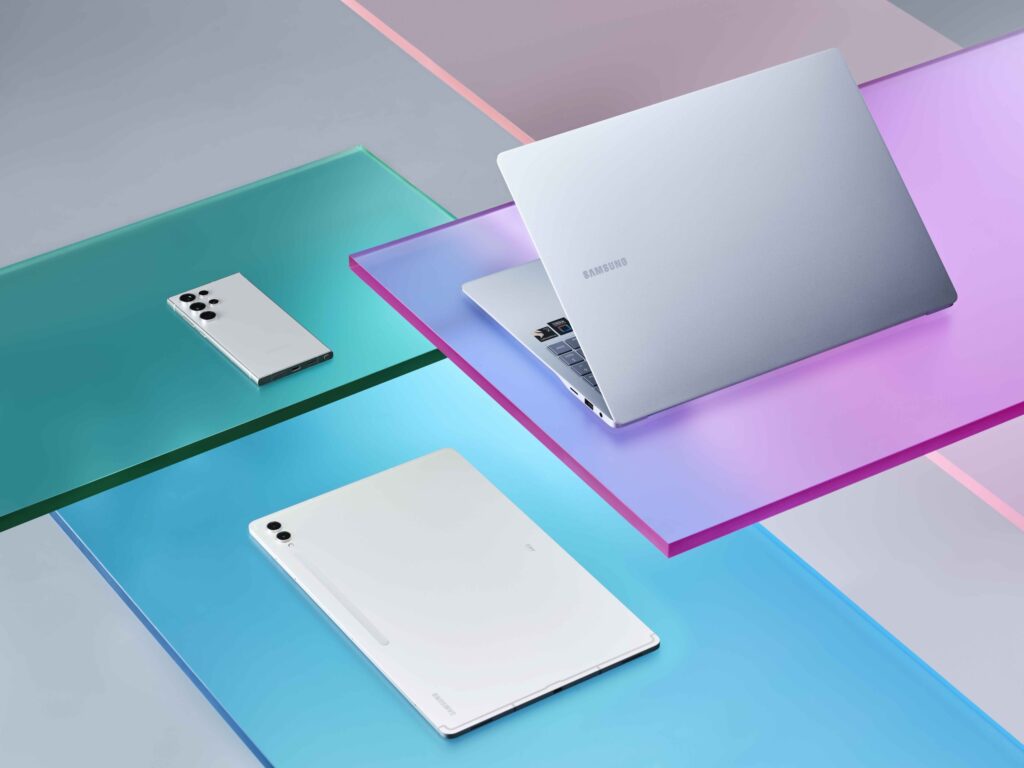Review: Samsung Galaxy Book4 Edge
With ridiculously long battery life and solid performance, Windows finally has an alternative the MacBook Air.

Four years ago, Apple released the new MacBook Air, powered by their in-house M1 chips, and ever since, it has been difficult to recommend a Windows laptop. The reason was simple; whereas Windows was running on a traditional x86 architecture, the new MacBooks ran on an ARM architecture, like smartphones, and these new chips took maximum advantage of this.
With this chip change, the MacBook Air provided better performance than ever, while producing less heat, and lasting an eternity on a charge. Someone I know used one at work for an entire day, forgot to charge it at home, but still had four hours of battery left at work the next day. Battery life varies on personal usecase — his work is primarily in a browser, with few tabs open, and he uses his computer with low screen brightness — but even a power user like myself could comfortably finish a work day on a single charge. They were quiet to run — because they did not need to cool anything — and lost almost no battery when they were not in use. And they were inexpensive, starting at under $1,000.
That is a killer combination, and one that Windows has taken a long time to catch up with. Microsoft had developed a version of Windows that ran on ARM chips, and released their own tablet running it on an ARM chip — the Surface X — but the performance was underwhelming, the operating system was buggy, and few apps worked. There are still teething issues with compatibility on the new Apple systems, but nothing like this.
However, four years have passed, and though we are on the cusp of a new MacBook line-up, powered by Apple’s new M4 chip, do not expect the same generational leap; and Windows laptops have more than caught up with Apple.

Take the new Samsung Galaxy Book4 Edge; it is the most notable, easy to recommend laptop using the new Snapdragon laptop chips, in any of its three sizes. The core information you should know is they are well built, have all the ports you could need, and you can leave your charger at home. Samsung quotes battery life of “up to 27 hours,” which will be true only you do not do anything on that laptop while it is turned on, and the screen is on lowest brightness. In my case, using the laptop as I normally would — with screen on full brightness, and using multiple applications — it lasted more than 10 hours on a charge, and you should expect similar performance to that.
Otherwise, it is just a well rounded laptop. It is thin without feeling flimsy; has a pleasant keyboard, with included numpad; good speakers and built-in mics, and the webcam looks more than good enough too. Also, if you have a Samsung phone, there are various handy ways your apps and message can synchronise between them, and it’s smoother than Microsoft’s own Your Phone app. My only niggles are that it is visually rather plain, and has thicker bezels than I would have liked; but that is about it. Oh, other than it has the mandatory Microsoft AI key, which is annoying, but can be remapped with PowerToys, and Windows will likely introduce an option soon to let you do so in system settings.
It is also a pretty easy laptop to shop for. The 14-inch and 16-inch versions come with the better screens — 3K resolution, AMOLED, touchscreens, and they are beautiful displays — and run the more powerful Snapdragon X Elite skews. This includes the 12-core X1E-84-100 on the upgraded 16-inch, which is the most powerful current Snapdragon chip, and exclusively available on this laptop; but Samsung chose to extremely underpower it for improved thermal performance, so I would not bother with the upgrade.
Aside from having a larger battery, the 16-inch version adds a MicroSD slot and USB 3.2 slot in addition to the HDMI 2.1 port, headphone jacket, and two USB 4.0 ports on the 14-inch version. The 14-inch version usually starts at $1,350, but is currently discounted to $800 — putting it right in line with the MacBook Air — and the 16-inch is discounted to $1,150 from $1,449; and your choice then should just come to which screen size you want.

